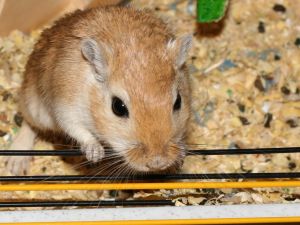Gerbilling

Gerbilling, also known as gerbil stuffing or gerbil shooting, refers to the supposed insertion of small animals, usually gerbils but also mice, hamsters, rats and various other rodents into a human rectum, supposedly to stimulate the prostate as in anal sex. It has been also done vaginally as a form of torture. Contrary to the popularity of the legend, gerbilling is unknown as an actual sexual practice, and despite apparently widespread public belief and persistent rumours, especially in the 1980s, no verified medical evidence of gerbilling exists, and its status is that of an urban legend. According to the Urban Legends Reference Pages (Snopes) inserting items into the rectum for purposes of auto-eroticism is practiced by people regardless of sexuality.
Rumors surrounding various male celebrities engaging in gerbilling have become popular urban legends over the years.[1] Jan Harold Brunvand records that the urban legend began in 1984, and initially involved a mouse and an unidentified gay man, but that in subsequent years this metamorphosed into a gerbil, and was applied to several named male celebrities that were publicly supposed to be gay.[2]
As a form of torture
Vaginal gerbilling was used as a form of torture under Augusto Pinochet's regime in Chile[3][4], and during Argentina's Dirty War[5] and other armed conflicts.
See also
- Rectal foreign object
- Felching
- The Death Camp of Tolerance, South Park episode
References
- ↑ Template:Cite encyclopaedia
- ↑ Template:Cite encyclopaedia
- ↑ http://www.purochile.rrojasdatabank.info/mujeres.htm
- ↑ www.lostiempos.com/.../muere-torturador-de-la-dictadura-de-pinochet_15136_17550.html
- ↑ http://www.pparg.org/pparg/documentos/represion/tortura/
Further reading
- Norine Dresser (July 1994). "The Case of the Missing Gerbil". Western Folklore. 53 (3): 229–242.
- Barbara and David P. Mikkelson (2001-11-18). "From Gere to Eternity". Urban Legends Reference Pages.
- Cecil Adams (1986-03-28). "Is it true what they say about gerbils?". The Straight Dope.
- Becky Vorpagel (1988). "A rodent by Any Other Name: Implications of a Contemporary Legend". International Folklore Review. 6: 53–57.